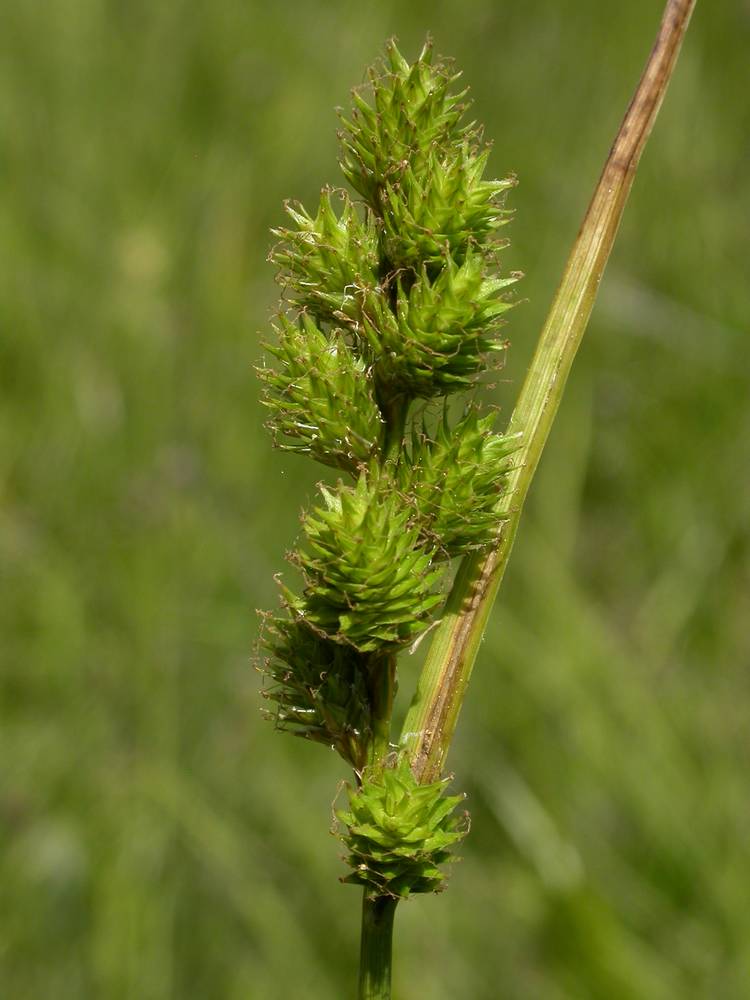Carex feta
green-sheath sedge
sheath fronts green and veined throughout; except for a white-hyaline triangle to 6 mm long near the top, sometimes prolonged 1.5–6 mm above the base of the blade;
blades (2.5)3–4(5) mm wide.
3.5–8 cm × 10– 13 mm, elongated but with overlapping spikes, green to straw-colored;
spikes ovate, gynaecandrous.
ovate to broadly ovate, 3.2–4.2 × 1.7–2.1 mm, green, white, or straw-colored, with 1–8 veins on each face;
beak white or straw-colored at tip, winged and ciliate-serrulate; (1.5)1.8–2.4 mm from top of achene to tip of beak;
stigmas 2.
lenticular; (1.3)1.5–1.8 × 0.9–1.2 mm, 0.4–0.5 mm thick.
2.7–3.5 mm long; shorter and narrower than the perigynia, white hyaline or straw-colored;
midrib green; straw-colored, or brown.
Carex feta
Wet meadows and prairies, margins of marshes and road ditches. 100–1500 m. BW, Casc, CR, ECas, Sisk, WV. CA, WA; north to British Columbia, WY. Native.
The neat, tidy appearance, overall green inflorescence, green leaf sheath fronts, and low elevation west-side range identify C. feta. Similar C. fracta is a coarser, sloppier plant with white-hyaline leaf sheath fronts and silvery inflorescences. The leaf sheath front of C. scoparia has such a narrow white-hyaline center that it can appear entirely green, but its usually curving inflorescence has a much finer texture with acuminate female scales and pointed perigynia, and its longer perigynia taper more gradually to the beak. See also discussions of C. longii and C. tribuloides, which have green sheath fronts.
Barbara Wilson, Richard Brainerd, Nick Otting
- Local floras:
BC,
CA,
OR,
WA
- Local Web sites:
CalFlora,
CalPhotos,
Flora NW,
PNW Herbaria
WildflowerSearch
iNaturalist (observations)
USDA Plants Database
- LBJ Wildflower Center
- SEINet
- Plants of the World Online
- Encyclopedia of Life
- Wikipedia
- Google Image Search

